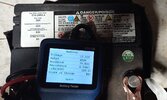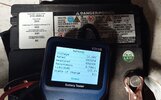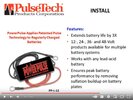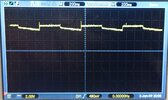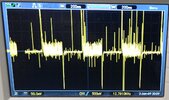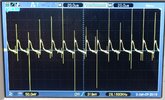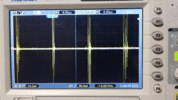Thanks to all.
I only need to estimate if 10yr old SBS190 batteries have 190Ah or 30Ah. Weighing wont work because they all weigh the same, approx 130lbs, and I have no way to know how much of plates are unusable, dried up or permanently sulfated. And since they are sealed with pressure valves, I have no easy way to refill or desulfate and replace new electrolyte so I would just use whatever capacity is remaining but would like to know approximately what it is before I commit to particular units. The batteries have been sitting in a warehouse for a long time, so surface charge will not be a problem.
Currently have one SBS190, which turned out to be disappointment: was expecting 90% original capacity since these are from power backups and were mostly sitting at room temp fully charged without cycling, but I got only 30Ah from it. I planned to build a bank of 8-10 units to capacity 20kWh, dragged this one sample to my off-grid cottage, attached to solar system, scheduled my consumption around expected 2kWh capacity only to find my lights went off after 2hrs with massive beep from the inverter. I did have energy monitor on the battery, so I know exactly how much was pulled from it.
The person who sold it to me has plenty, he says many his customers are using these for solar application and is willing to exchange for another unit. So I did not give up on the idea of 20kWh power bank for under CAD $1,500, maybe just got a bad unit. He just tests crank current and when I was getting this one he pulled 1.1kA from it.
Or if someone can suggest a way to restore the capacity on these. I do not know what is inside, if acid or gel, was thinking of drilling the valves, adding distilled water by syringe to the brim and reseal with tape or small rubber plug. That should replenish water in electrolyte whatever type it is. But that would prevent me to exchange. Will be my last resort if it turns out all his batteries are dried up
If your discharge rate is 1C, then 1 minute is only 1/60th of the charge, so that will be 50 mV (if the 3 V is correct), and you will need to measure the 50 mV change quite accurately, to better than 10 mV. Voltmeters that can measure to 1 mV on a 12 V system are quite expensive.
Was thinking of using INA226, module costs under $5 on Ali and I already have a few on hand. It measures two voltages with 15-bit + sign precision. System voltage up to 36V with LSB 1.25mV, and shunt voltage +-82mV with LSB 2.5uV, which would be 3.3mA on 75mV/100A shunt.


